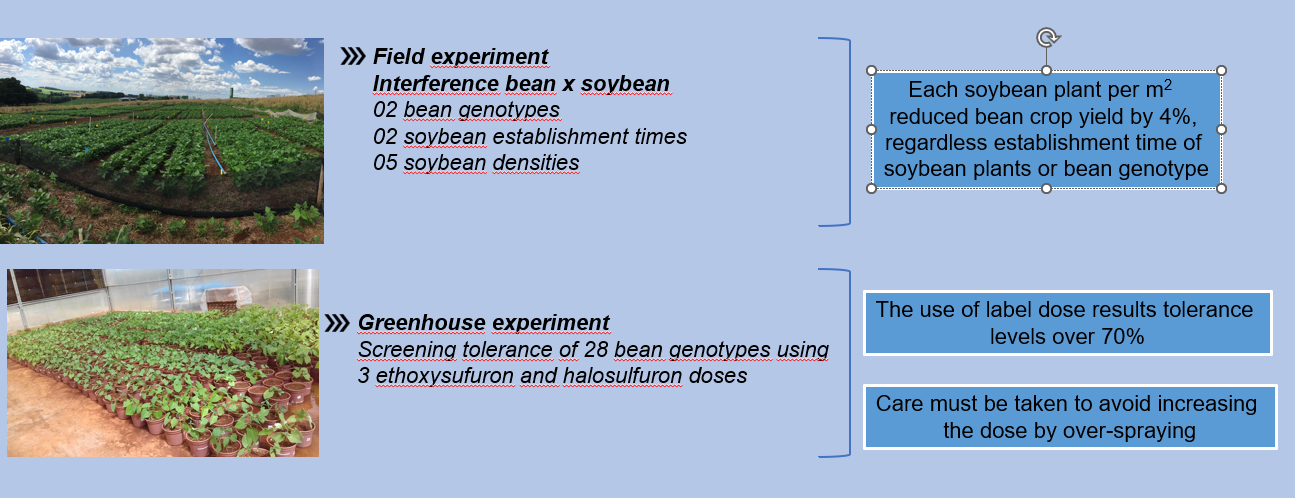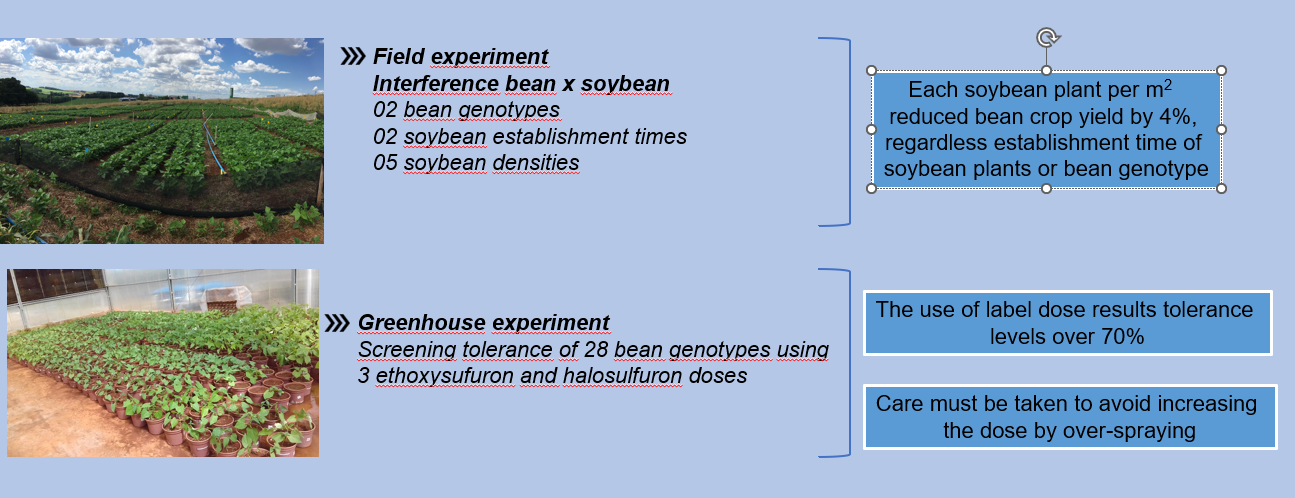Volunteer soybean (Glycine max) interference in bean (Phaseolus vulgaris) crops: ethoxysulfuron and halosulfuron critical level of damage and selectivity
DOI:
https://doi.org/10.48162/rev.39.113Palabras clave:
interferencia competitiva, soja voluntaria, tolerancia, herbicidasResumen

This study aimed to determine the negative impact of volunteer soybean plants on bean crop yield and the tolerance of bean genotypes to the herbicides ethoxysulfuron and halosulfuron. To determine the impact of volunteer soybean plants on bean crops, a field experiment was developed, with sub-sub-plots, and four replications. The main plots contained two bean cultivars, while the sub-plots received two soybean sowing times (0 and 7 days after the beans had been sown), while the sub-sub plots contained five soybean plant densities (0, 5, 10, 20, and 40 plants m-2). The tolerance of the bean genotypes was evaluated with two experiments in a completely randomized design with three replications. They were arranged in a 28 x 3 factorial design (bean genotypes x herbicide doses). Each soybean plant per m2 reduced bean crop yield by 4%. The recommended doses of ethoxysulfuorn and halosulfuorn resulted in tolerance levels above 70% for all the studied bean genotypes.
Highlights:
- The herbicides ethoxysulfuron and halosulfuron, are registered in Brazil for the control of volunteer soybean plants in bean crops.
- To date, the impact generated by volunteer soybean plants competing with bean plants is unknown.
- The tolerance of 28 bean cultivars to herbicides ethoxysulfuron and halosulfuron was determined using dose label and double the dose.
- The impact of volunteer soybean plants on bean crops was determined using two bean cultivars and two soybean sowing times.
- The bean genotypes displayed a highly variable response to the herbicides ethoxysulfuron and halosulfuron; however, when the label recommended dose of the herbicides was used, the tolerance levels observed were over 70%.
- Each soybean plant is capable of causing a 4% reduction in bean plant grain yield, regardless of the establishment time of the soybean plants or the bean genotype.
Descargas

Descargas
Publicado
Cómo citar
Número
Sección
Licencia
Derechos de autor 2023 Revista de la Facultad de Ciencias Agrarias UNCuyo

Esta obra está bajo una licencia internacional Creative Commons Reconocimiento-NoComercial-CompartirIgual 3.0.
Aquellos autores/as que tengan publicaciones con esta revista, aceptan las Políticas Editoriales.










.jpg)




